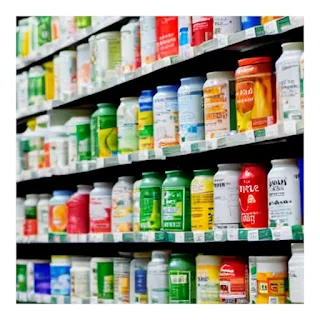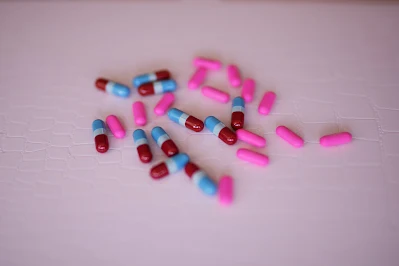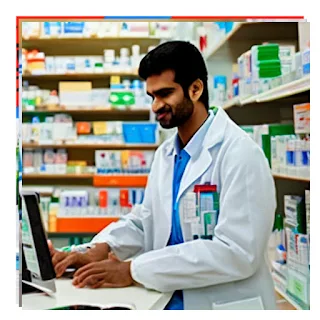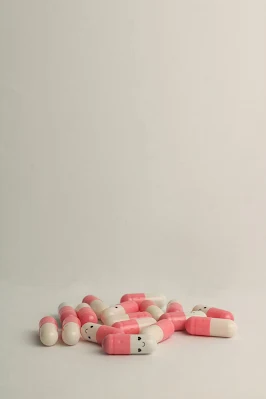A short, accessible component list is a chief of the heartiness assiduity. Wellness- centric food, beauty, and home- care companies have dropped their products of artificial preservatives, colorings, and spices, and washed them clean of “hard- to- gasp” chemicals. But the same can’t be said for the products meant to treat sickness. Among over the counter (OTC) medications, long lists of strange constituents beyond the active (aka the element responsible for a medicine’s therapeutic effect) are still common but that’s starting to change. New drug brands are shearing down their component lists, turning our attention to the paddings that comprise, on average, 75 percent of any lozenge and making transparent a space that’s been largely opaque.
The focus of these new brands is to remove or change out all the constituents generally included in an OTC medicine away from the active (e.g., acetaminophen in Tylenol), which remains the same. These other factors, called excipients or “inactive constituents,” are used to bind the drug, or help shape its weight, color, flavor, and size (among other places). They can include effects like artificial sweeteners, dyes, and colorants, as well as fillers like talc, shellac, and parabens. But while they ’re considered “inactive” because they don't have a remedial effect, these constituents can potentially impact your body like anything differently you might consume.
Now, this consumer scrutiny is being applied to drugs A 2022 Nielsen report linked clean- marker OTC (defined as products free from added sugar, GMOs, and artificial colors, flavors, preservatives, and sweeteners) as a factor driving growth among direct- to- consumer health- care brands.
This guy was inspired to launch Genexa in 2016 with another co-founder after spotting the long list of fillers he did not recognize in his kids’ medicine. “When we looked at the OTC aisle, we were shocked to find that nearly every drug contained these artificial inactive constituents, yet no one was doing anything to produce clean options,” he says. So, he and the co-founder took effects into their own hands, stripping cough suppressants, laxatives, allergy meds, antacids, and further of an “Ex List” of 39 excipients used by heritage OTC brands and generics, while retaining the actives and rebuilding the medicines with natural fillers like rice excerpt, agave fiber, and vegetable cellulose. Last time, Genexa raised a$ 60 million Series A. This time, the brand further than doubled its retail presence to an aggregate of 60,000 stores, including Walmart, CVS, Rite Aid, and Walgreens, and released four new products (bringing its total to 31).
While they ’re considered “inactive” because they don't have a remedial effect, excipients can potentially impact your body like anything differently you might consume.
Another brand to watch in this space is Welly, which launched a line of OTC medications and supplements in August. Its 13 products treat everyday affections like cough, cold, pain, and indigestion with actives used in being medicines but formulated into soft liquid- gel capsules to avoid the need for artificial colorings and flavors, talc, and parabens. Also, this fall, KinderFarms, a line of organic protein shakes and electrolyte results for kiddies, expanded into pharma with the launch of KinderMed. The new line, available in further than,000 stores civil, includes four liquid OTC products for kiddies and babies that use the actives from Tylenol and Triaminic but exchange artificial sweeteners for organic agave saccharinity, organic flavors, and citric acid.
Also in 2022, new pharmaceutical brand Wonderbelly launched with a stripped- down take on TUMS chewable antacids that includes just the active (calcium carbonate) and five factory- grounded excipients sucrose, natural flavors deduced from fruit and vegetable excerpt, sludge bounce, vegetable cellulose, and vegetable magnesium stearate. Wonderbelly raised a $3.4 million round this summer, which co-founders Well Good 2023 Trends counsels, say will be put toward getting a full- fledged “clean pharma gut- health brand. ” Over next in the company’s channel for 2023 are other digestive- health products like a gas- relief drug, a laxative, and a multi-symptom product exercising the same active as Pepto- Bismol, all formulated without artificial colorings, sweeteners, or flavors, or talc or titanium dioxide.
These new launches are reflective of clear consumer demand. Whether they represent a health necessity, still, is gloomy. In order for any OTC medicine to get approved by the Food and Drug Administration (FDA), all of its constituents, including the inactive ones, have to be determined “safe in the quantities administered.” That said, the lack of a proven safety issue does not inescapably make a component a good thing to consume or mean it’s recommended to do so long- term. An illustration? Titanium dioxide (TiO2), used in numerous OTC products, is presently an FDA- approved food cumulative but was banned in the European Union in 2021 after a study by an EU food agency set up that regular consumption of it may have the eventuality to damage DNA over time. (As of now, Petco and Dunkin’ Donuts ban TiO2, and Mars is presently being sued for the component’s addition in Skittles.)
In the same realm, there are a many other constituents frequently used as fillers in OTC medicines that have raised red flags among the heartiness- inclined for their addition in other particulars. For case, parabens were formerly a common preservative in soaps and moisturizers but have ago been removed by numerous major beauty brands and medicine stores because exposure to them may be linked to bone cancer (however there is not yet sufficient substantiation to prove this claim). And talc, which can contain asbestos, has been linked to ovarian and lung cancer, leading Johnson & Johnson to remove it this time from its baby greasepaint after billions of bones in suits. But again, this is not definitive substantiation that these constituents, or others noted over, are bound to beget damage when consumed in specifics, or that they need to be excluded from your drug press.
Where new clean OTC options can play an essential part, still, is for people with disinclinations and perceptivity. In erecting their new excipient biographies, the folks at Genexa, Wonderbelly, and KinderMed also decided for constituents free from gluten, dairy, lactose, and other common allergens which is a oddity for drug. A 2019 study on excipients set up that nearly 93 percent of oral solid specifics contain common allergens like peanut oil painting, lactose, and colorings, and nearly all have composites that some people can’t tolerate, like gluten and certain types of sugars. Indeed, over,200 reports for “antipathetic response to excipient” were filed to the FDA between 2017(the foremost data is available) and 2022 by consumers, health- care providers, and medicine manufacturers though the number of people actually replying is probably larger, since people may not connect the blotches between a response and the “inactive” of a medicine, says gastroenterologist Giovanni Traverso, MD, lead author on the study.
“Medicines aren’t needed to use warnings like ‘contains gluten’ or ‘contains dairy’ or to list amounts of these allergens." Giovanni Traverso, MD
Medicine companies don’t need to expose anything about inactive constituents beyond their names (compare this to the food assiduity, where the FDA requires nutrition markers list all constituents by order of weight). This makes it veritably hard to tell from the marker alone if a medicine contains a implicit allergen, which might be just an element of a component with another name. “Medicines aren’t needed to use warnings like ‘contains gluten’ or ‘contains dairy’ or to list amounts of these allergens,” says. Traverso. He originally came interested in the content after a case with celiac complaint replied inadequately to the acid- reducer omeprazole. As it turned out, the particular medicine this case took contained gluten, but Dr. Traverso only learned this after reaching out to the manufacturer for further information.
The fact that different performances of a single OTC drug (say, Advil versus store- brand ibuprofen) can include different inactive constituents just complicates effects further for folks with disinclinations and intolerances. However, that has counteraccusations for someone who’s lactose-intolerant, but the products are vended interchangeably, If one contains lactose and the other doesn’t. By discrepancy, Wonderbelly, Genexa, and KinderMed take a runner from the food assiduity and extensively announce their products as free from the full slate of common allergens.
This kind of translucency is groundbreaking for OTC medications given how little scrutiny the medicine manufacturing assiduity has traditionally entered. “People frequently confuse the FDA’s medicine blessing process with medicine manufacturing processes,” says CEO and co-founder of Valisure, a laboratory that offers third- party testing for medicinal and particular- care products. “To get any medicine approved, OTC or tradition, does bear huge clinical trials and tons of FDA oversight. But once a medicine is approved and is being manufactured, the end product isn't being tested by the FDA. That’s just being done by the manufacturers and tone- reported to the FDA but as it’s produced batch by batch, the final product can change from what was approved.” This is why, on average,500 medicines and bias are recalled in the U.S. Every time, including OTC medicines like ranitidine (Zantac), a common antacid recalled in 2020 after tests discovered it contained inferior quantities of the known carcinogen N- nitrosodimethylamine( NDMA).












